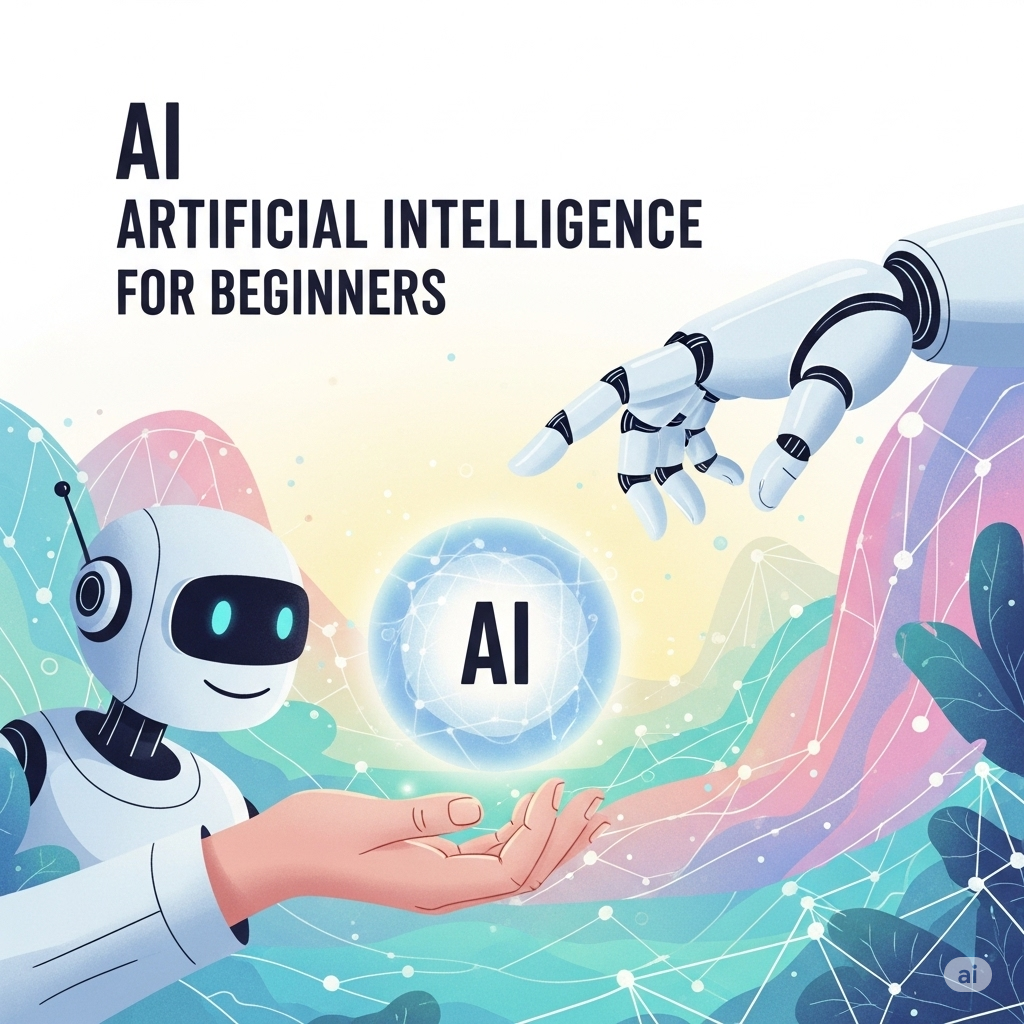AI for Beginners 2025: Your Easy Start Guide
Feeling lost in the AI buzz? Our 2025 beginner's guide breaks down AI basics, introduces easy-to-use tools like ChatGPT and Gemini, explains prompting, and shows how AI automation can simplify your life. No tech-pertise needed!

Artificial intelligence (AI) is no longer the stuff of science fiction—it’s powering everything from voice assistants to recommendation engines. For beginners, diving into AI can feel overwhelming: unfamiliar terms, complex algorithms, and a dizzying array of tools. This guide breaks it all down into simple steps, so anyone—even with zero coding experience—can understand what AI is, why it matters, and how to take those first steps toward mastering it.
What Is AI?
At its core, AI refers to computer systems that can perform tasks traditionally requiring human intelligence—things like recognizing speech, translating languages, or identifying objects in images. Two broad branches:
- Narrow (or Weak) AI: Systems trained for specific tasks (e.g., chatbots, recommendation systems).
- General (or Strong) AI: Hypothetical systems with human-level reasoning across a wide range of tasks (still largely theoretical).
Most “AI” you encounter today—like Siri, Alexa, or Netflix’s recommendation engine—is Narrow AI, powered by machine learning (ML) algorithms that learn patterns from data.
Why AI Matters for Beginners
- Ubiquity: AI is everywhere—in your phone, your social feed, and even your car.
- Career Opportunities: Demand for AI skills is skyrocketing across industries—marketing, healthcare, finance, and more.
- Creative Applications: From generative art to music composition, AI tools enable anyone to explore creative projects.
- Everyday Productivity: AI-powered tools can automate repetitive tasks—think email sorting, scheduling, or data entry—freeing up time for strategic work.
Step 1: Learn the Basic Concepts
- Data & Algorithms
- Data: The fuel for AI. Models learn patterns from large datasets (images, text, numbers).
- Algorithms: Recipes that tell the model how to learn from data. Common ones include decision trees, neural networks, and clustering methods.
- Supervised vs. Unsupervised Learning
- Supervised: Models trained on labeled data (e.g., photos tagged “cat” or “dog”).
- Unsupervised: Models find patterns without labels (e.g., grouping customers by purchase behavior).
- Training vs. Inference
- Training: The model learns from data (usually resource-intensive and done once).
- Inference: The model makes predictions on new data (real-time or batch).
- Common Terminology
- Model: The trained algorithm.
- Feature: An individual measurable property (e.g., pixel values in an image).
- Hyperparameters: Settings that control how the model learns (e.g., learning rate).
Step 2: Choose Your First Tools
You don’t need a PhD or massive computing power to start experimenting. A modern laptop and some free tools are enough to get your feet wet.
- Python & Jupyter Notebooks: The lingua franca of AI. Notebooks let you mix code, text, and visuals.
- Google Colab: A free, cloud-based Jupyter environment—no setup required, and you get free GPU access.
- Prebuilt Libraries:
- scikit-learn: Great for classical ML algorithms (classification, regression, clustering).
- TensorFlow / Keras and PyTorch: Top choices for deep learning and neural networks.
Step 3: Hands-On with a Simple Project
One of the best ways to learn is by doing. Here’s a beginner-friendly project: Digit Recognition using the MNIST dataset (handwritten numbers).
- Load the Data: MNIST is built into most ML libraries.
- Explore the Data: Visualize a few digits to see what you’re working with.
- Train a Model: Use a simple neural network with one hidden layer.
- Evaluate Performance: Check accuracy on a test set—aim for ≥ 95%.
- Improve: Experiment by adding layers, tweaking hyperparameters, or trying a different optimizer.
This project teaches key steps—loading data, preprocessing, training, evaluation, and iteration.
Step 4: Find Quality Learning Resources
While free tutorials are everywhere, a structured course can accelerate your progress. For absolute beginners, AI For Everyone by Andrew Ng on Coursera is highly recommended—it covers AI concepts without heavy coding, offering real-world examples and career guidance. If you’re ready to code, Introduction to Machine Learning with Python by DataCamp or Fast.ai’s Practical Deep Learning for Coders are excellent next steps.
Pro Tip: Many platforms offer free trials or financial aid—check their websites before enrolling.
Step 5: Join the AI Community
Learning AI is more fun and effective when you connect with others:
- Online Forums: Stack Overflow, Reddit’s r/MachineLearning, and the TensorFlow Community.
- Meetups and Hackathons: Look for local AI/ML meetups through Meetup.com or Eventbrite.
- Open-Source Contributions: Browse GitHub repositories, pick an issue, and contribute.
Step 6: Apply AI to Real-World Problems
Once you’ve built a few toy projects, think about problems in your day-to-day life or work that AI could help solve:
- Automating data entry or reporting in your job.
- Building chatbots for customer service.
- Creating personalized content recommendations on a blog or website.
Hands-on application solidifies learning and builds a portfolio to showcase your skills.